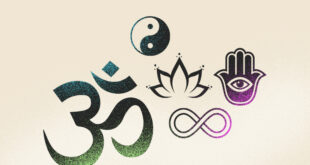Only green screen is used in movies because it provides a high level of flexibility for filmmakers to add any background or special effects during post-production. Green screen technology, also known as chroma keying, enables seamless blending of actors or objects with digitally created backgrounds or footage.
This technique is widely preferred in the film industry due to its versatility and ease of editing. With green screen, filmmakers can create realistic and immersive cinematic experiences by replacing the green background with any desired setting or imaginative visuals.
Whether it’s a fantasy world, an exotic location, or an action-packed scene, green screen allows filmmakers to bring their creative visions to life on the silver screen.
The Science Behind Green Screen Technology
When it comes to creating stunning visual effects in movies, green screen technology has become an indispensable tool in the filmmaker’s arsenal. By using green screen, filmmakers are able to transport their actors and characters to any location, whether it be a mystical realm, an alien planet, or even the depths of outer space. But what exactly is the science behind green screen technology?
How Green Screen Technology Works In Movies
Green screen technology works on the principle of chroma keying, which allows filmmakers to replace a specific color in the scene, typically green, with a different background. This process involves shooting the actors or objects against a green screen backdrop and then using specialized software to remove the green color and replace it with another image or video.
The reason green is commonly used as the color for the green screen is due to its contrasting nature with most human subjects. The color green is chosen because it is less likely to be found in the actors’ costumes or props, minimizing the risk of unintended parts of the scene being removed in post-production.
The Use Of Chroma Keying To Create Special Effects
Chroma keying has revolutionized the way special effects are created in movies. By replacing the green screen with a different background, filmmakers are able to seamlessly integrate actors into environments that would otherwise be impractical or impossible to film on location. This technology has opened up a whole new world of possibilities for filmmakers, allowing them to bring their wildest imaginations to life on the silver screen.
Explanation Of How Green Screen Allows For Seamless Background Replacement
One of the key advantages of green screen technology is its ability to facilitate seamless background replacement. By shooting against a green screen, the background can easily be removed, leaving behind only the actors or objects in the scene. This allows filmmakers to replace the original background with a new one, creating the illusion that the actors are actually in a different location.
Moreover, green screens provide a uniform and consistent color that can be effectively removed in post-production. The green color can be easily isolated and replaced, ensuring that the edges of the actors or objects remain sharp and well-defined. This attention to detail is crucial in maintaining the realism of the final shot and avoiding any noticeable discrepancies between the foreground and background elements.
In conclusion, green screen technology has revolutionized the way movies are made. It allows filmmakers to transport their characters to any location, create breathtaking special effects, and seamlessly replace backgrounds for a truly immersive viewing experience. The science behind green screen technology, specifically the use of chroma keying and the ability to achieve seamless background replacement, has made it an indispensable tool in the world of filmmaking.
Advantages Of Using Green Screen In Movies
Green screen technology has revolutionized the way movies are made and has become a crucial tool in the filmmaker’s arsenal. By using a green screen, filmmakers can create realistic and fantastical settings, save on costs, and shoot scenes in any location without the need for extensive travel. Let’s delve into the advantages of using a green screen in movies:
Enhanced Flexibility In Creating Realistic And Fantastical Settings
The use of green screens in movies provides filmmakers with enhanced flexibility in creating settings that are both realistic and fantastical. With a green screen, the possibilities are endless, as it allows the integration of actors into computer-generated landscapes, ancient cities, or even outer space. This technology enables filmmakers to bring their creative visions to life, transporting audiences to captivating worlds.
Cost-effective Solution Compared To Building Physical Sets
When it comes to budget constraints, using a green screen is a cost-effective solution for filmmakers. Building physical sets can be time-consuming, expensive, and often impractical for certain scenes. The use of green screens offers a more efficient alternative, eliminating the need to construct elaborate sets, especially for scenes with different locations or intricate backgrounds. By using green screens, filmmakers can allocate their budget to other important aspects of production while still achieving stunning visuals.
Ability To Shoot Scenes In Any Location Without Travel Expenses
One of the major advantages of using green screens is the ability to shoot scenes in any location without incurring travel expenses. Filming on location can be challenging and costly, requiring extensive logistics and travel arrangements. With green screens, filmmakers can transport their actors to any place in the world or even fictional environments without leaving the comfort of the studio. This not only saves time and money but also allows for greater control over the final look of the scene.
Challenges And Limitations Of Green Screen Technology
Green screen technology is commonly used in movies due to its versatility for creating realistic visual effects. However, it does come with challenges and limitations such as lighting inconsistencies, color spill, and the need for precise editing techniques to achieve seamless integration.
Dealing With Lighting And Shadows To Avoid Inconsistencies
Green screen technology has revolutionized the film industry, allowing filmmakers to create stunning visual effects and transport audiences to extraordinary worlds. However, like any technology, there are certain challenges and limitations associated with using green screens. One of the primary challenges is dealing with lighting and shadows to avoid inconsistencies in the final product. When filming with a green screen, it is essential to ensure that the lighting on the talent matches the virtual environment they will be placed in.
Properly lighting the green screen itself, as well as the talent, is crucial to avoid any discrepancies in color or shading. The lighting must be uniform across the entire green screen, without any hotspots or areas that are too dark. To address these challenges, cinematographers and lighting technicians meticulously position lights and adjust their intensity to achieve evenly distributed lighting on the green screen.
Additionally, they may use various tools such as diffusers and reflectors to soften or redirect light as needed. This meticulous attention to lighting helps to create a seamless blend between the live-action footage and the virtual background.
Overcoming Spillage And Color Bleed Issues
Another challenge faced when using green screens is spillage and color bleed. Spillage occurs when the green color reflects onto the talent or objects in the scene, resulting in a green tint. Color bleed, on the other hand, refers to the unintentional mixing of the green screen color with other colors in the image.
To overcome spillage and color bleed, filmmakers employ several techniques and tools. One such technique is called “chroma keying,” which involves precisely selecting and extracting the green color from the footage during post-production. This allows the filmmakers to replace the green background with any desired image or video.
Additionally, a technique called “color grading” is applied to the footage to ensure that the color tones are accurately represented. This process involves adjusting the hues, saturation, and contrast of the live-action footage and the virtual background to achieve a cohesive and visually pleasing result. By carefully addressing spillage and color bleed issues, filmmakers are able to achieve realistic and immersive environments for their audiences.
The Importance Of Proper Talent Positioning For Realistic Interaction
Creating realistic interaction between the talent and the virtual environment is paramount for a convincing visual effect. If the talent’s positioning is not correctly aligned with the background, the final result can appear unnatural and disconnected. To ensure realistic interaction, filmmakers utilize reference markers, such as tracking dots or motion-capture technology, on the green screen. These markers help accurately track the movement of the talent and enable precise alignment with the virtual elements.
It is crucial to position the talent in relation to the virtual environment to allow for proper eyelines, object interactions, and any required physical contact. By focusing on proper talent positioning, filmmakers can elevate the authenticity of their visual effects, providing audiences with a seamless and immersive cinematic experience. The dedication to realism extends beyond the green screen itself, emphasizing the importance of meticulous planning and coordination between the talent, the set, and the virtual world.
To summarize, while green screen technology offers immense creative possibilities in the film industry, it also presents challenges and limitations. These challenges require meticulous attention to lighting, careful handling of spillage and color bleed, and an emphasis on proper talent positioning. Overcoming these obstacles ensures that filmmakers can create visually stunning and realistic virtual environments that captivate audiences worldwide.
Evolution And Innovation Of Green Screen Technology
Green screen technology has revolutionized the film industry, enabling filmmakers to create breathtaking landscapes, fantastical environments, and mind-boggling visual effects. From transporting audiences to futuristic worlds to simulating heart-stopping action sequences, green screen has become an essential tool for filmmakers. The evolution and innovation of green screen technology have played a pivotal role in bringing these mesmerizing cinematic experiences to life. Let’s delve into the historical background, early uses, advancements in technology, and future prospects of green screen technology.
Historical Background And Early Uses Of Green Screen In Films
The history of green screen can be traced back to the early days of cinema. In the early 1900s, filmmakers pioneered various techniques to achieve special effects. However, it was not until the 1940s that the concept of using colored screens for compositing shots gained popularity.
One of the earliest examples can be seen in the 1940 film “The Thief of Bagdad,” where scenes with flying carpets and magical creatures were created using blue screen technology. Over time, the blue screen gave way to the now iconic green screen. It was discovered that green screens offered better contrast and allowed for more precise keying.
Advancements In Technology Leading To More Realistic Effects
The advancements in technology have significantly enhanced the capabilities of green screen technology, enabling filmmakers to produce more realistic and immersive visual effects. Modern green screen techniques involve shooting actors or objects in front of a vibrant green backdrop and then replacing that green color with computer-generated imagery (CGI) in post-production.
With the advent of high-definition cameras, filmmakers can capture finer details, ensuring seamless integration of the actors or objects with the digitally created backgrounds. This level of precision, combined with sophisticated keying software, allows for precise extraction of the green elements and enables filmmakers to effortlessly merge different layers of footage, creating stunning composite shots.
Future Prospects And Potential Improvements In Green Screen Technology
The future of green screen technology holds immense potential for further advancements. As technology continues to evolve, we can anticipate more realistic and immersive experiences in films. One area that shows promise is the development of new keying algorithms. These algorithms will utilize artificial intelligence and machine learning, enabling more accurate and instantaneous keying, even in challenging lighting conditions.
Furthermore, the emergence of virtual reality (VR) and augmented reality (AR) presents exciting opportunities for green screen technology. Filmmakers can seamlessly blend live-action footage with virtual environments in real-time, pushing the boundaries of storytelling.
The integration of green screen technology in the film industry has come a long way since its inception. With each advancement, filmmakers are able to create visually stunning and captivating worlds that transport audiences to unimaginable realms. As technology continues to progress, the future of green screen technology looks promising, opening up new avenues for filmmakers to push creative boundaries and deliver truly unforgettable cinematic experiences.
Alternate Techniques And Considerations In Filmmaking
When it comes to creating seamless and captivating visual effects in movies, the use of green screen technology has become a staple in the filmmaking industry. However, there are other techniques and considerations that filmmakers can explore to achieve similar results. In this section, we will delve into these alternate methods and highlight their effectiveness in specific films, as well as the factors to consider when deciding whether to use green screen technology for a movie project.
Exploring Other Methods Like Blue Screens And Motion Capture
While green screens have dominated the scene, blue screens have also found their place in certain film productions. Just like green screens, blue screens allow filmmakers to replace the background during post-production, enabling them to create a realistic and immersive setting for their story.
In addition to blue screens, another technique that’s gaining popularity is motion capture. Through specialized cameras and sensors, motion capture records the movements and actions of actors, which are then transferred onto computer-generated characters in the final footage. This technique is often used in films that require the depiction of non-human characters or extraordinary physical abilities.
Case Studies Of Films That Used Non-green Screen Techniques Effectively
Several notable films have successfully utilized alternative techniques to achieve remarkable visual effects. One such example is the movie “Avatar” directed by James Cameron, which employed extensive motion capture technology to bring the fantastical world of Pandora to life. By immersing the actors in a motion capture environment, the film was able to create realistic alien characters and breathtaking action sequences.
Another compelling case study is the movie “Sin City” directed by Robert Rodriguez, which utilized a combination of green screen and practical sets to recreate the stylized black-and-white comic book aesthetic. This unique approach not only added to the film’s visual appeal but also enhanced the storytelling by seamlessly integrating the actors into the comic book-inspired environment.
Factors To Consider When Deciding On The Use Of Green Screen In A Movie Project
While green screen technology offers immense versatility and flexibility in creating visual effects, it is important to carefully evaluate its suitability for each movie project. Some key factors to consider include:
- The desired visual style and aesthetic of the film
- The availability of practical sets or locations
- The budget and resources allocated for visual effects
- The expertise and experience of the visual effects team
By weighing these factors, filmmakers can make informed decisions about whether green screen technology is the right choice for their movie project, or if alternative techniques would better serve their creative vision.
Frequently Asked Questions For Why Only Green Screen Is Used In Movies?
Why Are Green Screens Used In Movies?
Green screens are used in movies because they allow filmmakers to replace the green background with any desired scene through chroma keying technology. This technique provides flexibility and creativity in adding different backgrounds or special effects to enhance the visual appeal of the movie.
How Does A Green Screen Work In Movies?
A green screen works by chroma keying, where the green color is electronically replaced with another image or video footage. This is achieved through advanced software and techniques that detect and remove the green color, allowing the filmmaker to seamlessly integrate different backgrounds or objects into the scene.
What Are The Advantages Of Using Green Screens In Movies?
Using green screens in movies offers several advantages. Firstly, it provides a cost-effective way to create realistic and visually appealing scenes without the need for complex set designs. Additionally, green screens allow filmmakers to transport characters to different locations or create imaginary worlds that would be otherwise impossible or expensive to film on-site.
Can Green Screens Be Used In Any Color?
Although green is the most commonly used color, green screens can be of any color. However, green is preferred due to its contrast with most human skin tones and a better separation from other objects. It allows for easier chroma keying and provides better results during post-production.
Conclusion
To sum up, green screens have become an integral part of the movie-making process due to their versatility and cost-effectiveness. By using green screens, filmmakers can transport audiences to any imaginable location and bring stories to life. From epic fantasy realms to bustling city streets, green screens offer endless possibilities for creative storytelling.
As technology continues to advance, we can only expect green screens to become even more prevalent in the film industry. So next time you watch a movie, remember the magic behind the green screen that allows for captivating cinematic experiences.
 Samoyik Your Entertainment Partner
Samoyik Your Entertainment Partner




